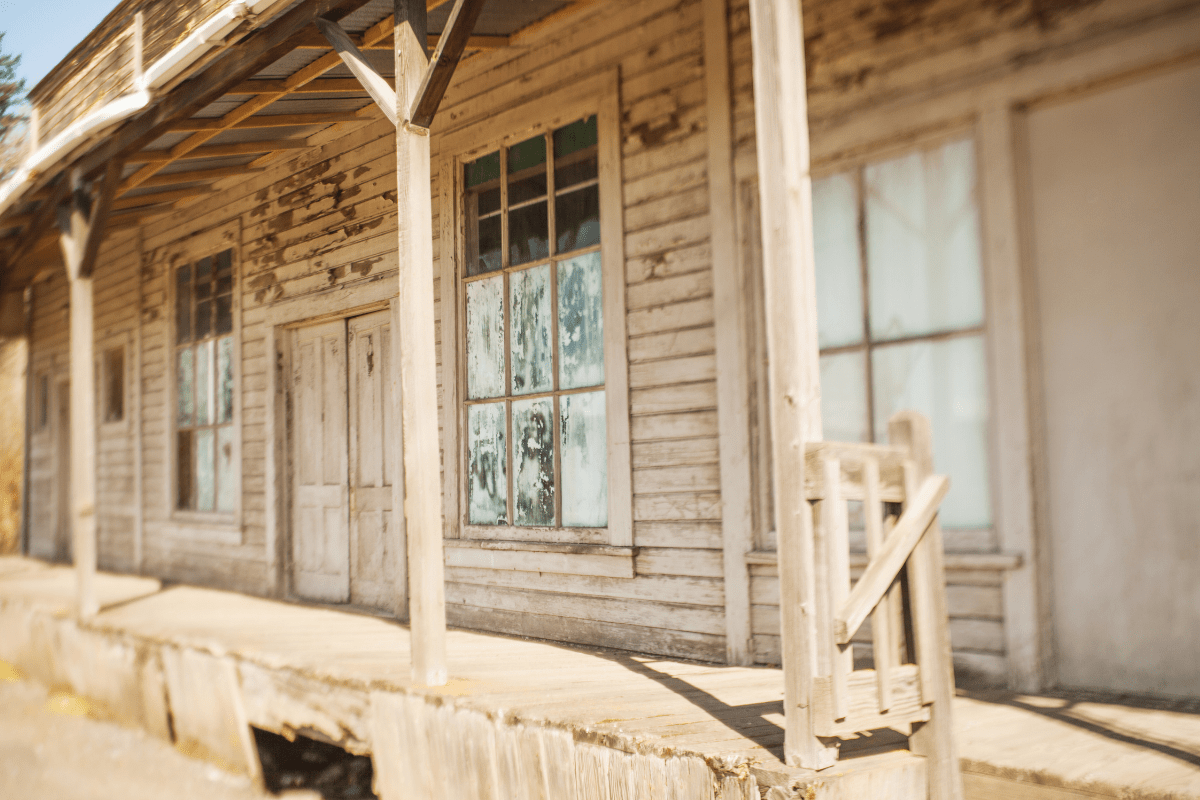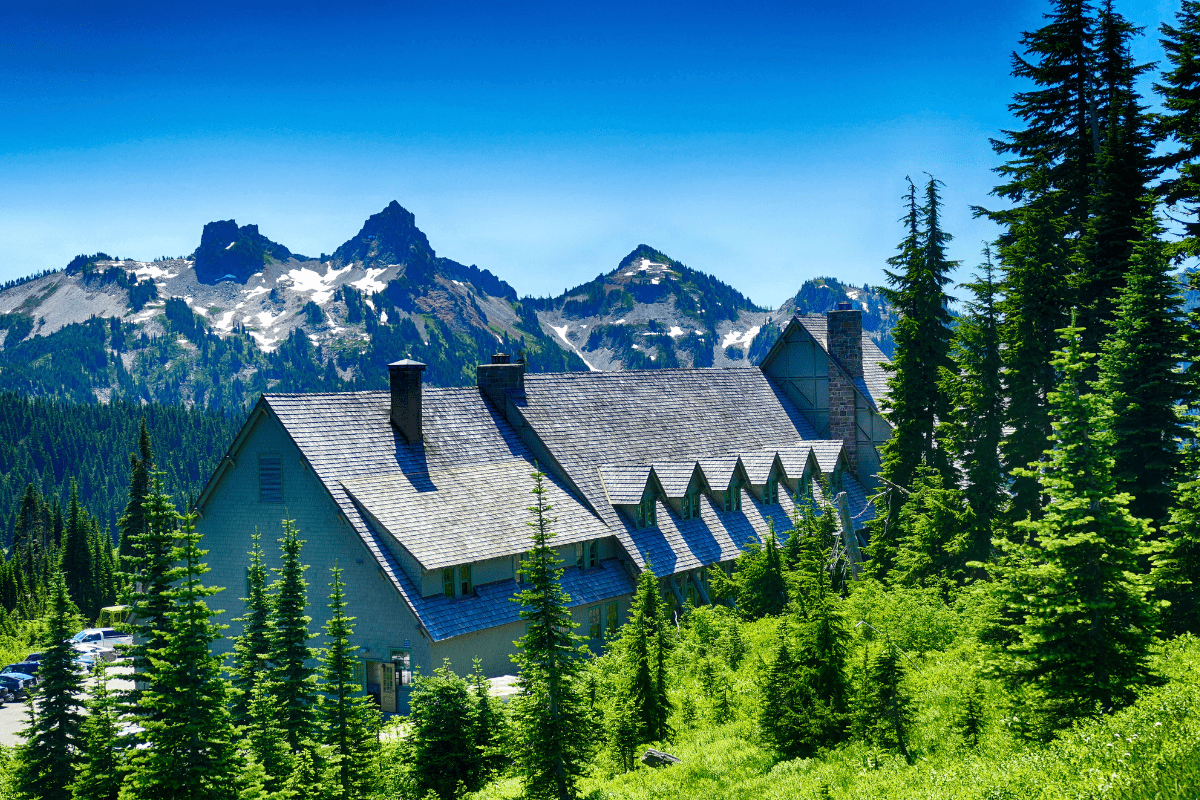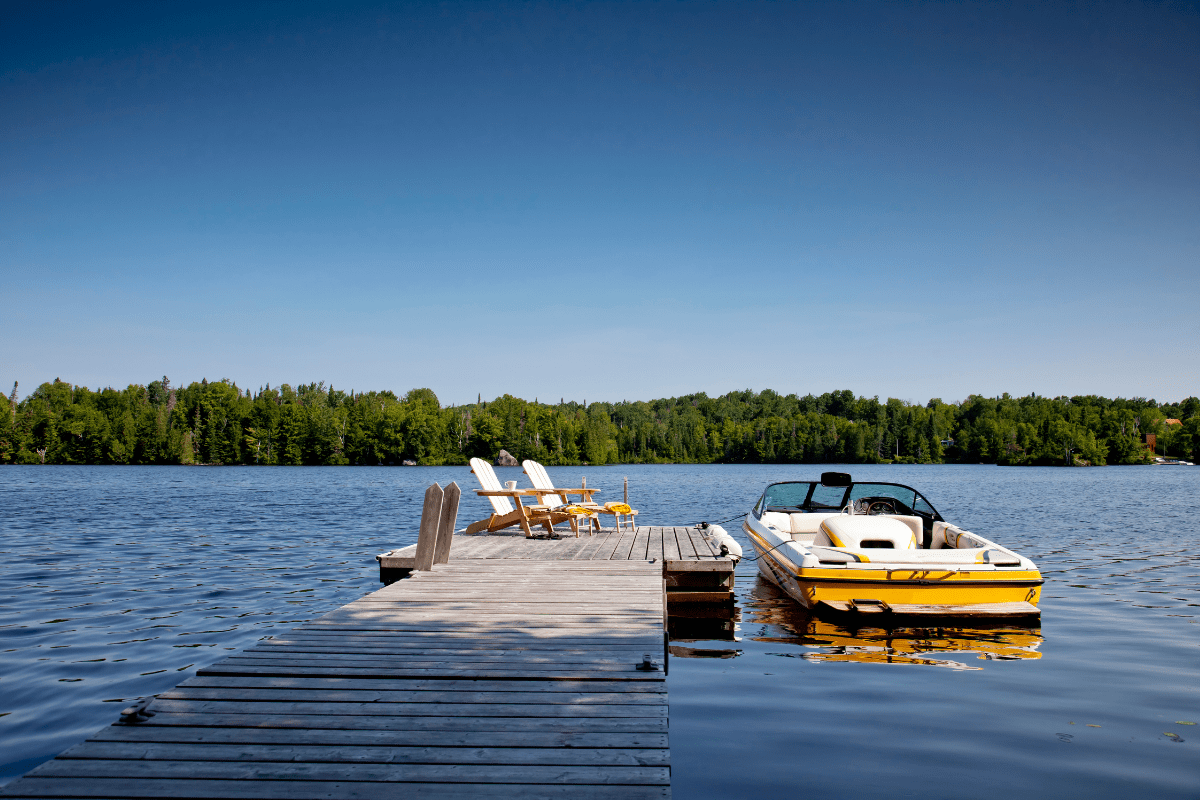What happens when you combine Pacific Northwest hiking trails with abandoned buildings, unsolved murders, and millions in lost gold? You get Washington's ghost town circuit, where history buffs and adventure seekers find their perfect overlap. These 100+ abandoned sites range from Instagram-worthy ruins you can drive to, to remote mining camps that require serious commitment and extra water bottles to reach.
From boom to bust: Understanding Washington's abandoned places
Washington harbors over 100 ghost towns in various stages of decay, each one telling a different story about dreams that didn't quite pan out. Some were mining camps where fortune seekers pulled millions in precious metals from the ground before the veins ran dry. Others were railroad towns that connected the frontier until progress laid new tracks elsewhere. There were coal company towns that powered steam locomotives, and agricultural settlements that withered when wheat prices tanked harder than my first attempt at sourdough during quarantine.
The geographic diversity is stunning too. You'll find these abandoned places everywhere from the Cascade Mountains to the Columbia Plateau, each location offering its own flavor of desolation. What makes them particularly fascinating is how they preserve tangible connections to pivotal moments in regional history. You can literally walk the same paths as prospectors, stand where train disasters unfolded, and watch nature slowly reclaim what humans spent decades building.
The accessible ghosts: No hiking boots required
Let's start with the easy wins, because not everyone wants to trek through miles of wilderness to see some old buildings.
Liberty keeps on living
Liberty stands out as Washington's oldest "living ghost town," and yes, that's a real designation, not something I made up. About 12 residents still call this place home, maintaining a community founded in 1873 when the Goodwin brothers struck gold. Located just one mile off Highway 97 in Kittitas County, this is probably the most family-friendly ghost town you'll find.
The town produced some seriously unique crystalline wire gold that now sits in the Smithsonian, which is pretty cool considering most of us can barely get our craft projects into the county fair. The 17-acre Historic District, added to the National Register in 1974, preserves remarkable original structures including the founder's cabin, an 1890s hotel, and a butcher shop from 1894.
What really brings Liberty to life is Wes Engstrom, the 91-year-old town historian who's been there since 1971. He maintains a working replica of the Virden arrastra, which sounds like a pasta dish but is actually the only operational historic mining equipment in any Washington ghost town. Visitors can sign the international guest book and maybe even catch Wes demonstrating gold processing techniques.
The BLM Liberty Recreation Site offers 15 campsites if you want to extend your stay, and rock hounds still search for gold and those famous Ellensburg Blue Agates, ranked as the world's third-rarest gemstone. No hiking required, just drive right in and explore about a third of a mile of history.
Molson's museum without walls
Up near the Canadian border, Molson operates as an exceptional open-air museum that chronicles one of the most dramatic population crashes in Washington history. The town went from 300 people to just 12 between 1900 and June 1901, faster than my enthusiasm for New Year's resolutions.
The collapse happened when the Molson Company yanked its $170,000 investment, which in 1900 money was roughly equivalent to "all of it." Despite the setback, the town achieved distinction as Washington's highest railroad station at 3,707 feet when the Great Northern Railway arrived in 1905. Then things got weird in 1909 when homesteader J.H. McDonald enforced his land claim by literally evicting the entire town, forcing residents to establish "New Molson" half a mile north.
Today, the Old Molson Ghost Town Museum preserves multiple original buildings including:
- Assay office with testing equipment
- Bank building containing original safe
- Three-story brick Molson Schoolhouse Museum
- Various saloons and law offices
- General store with period merchandise
The museum welcomes visitors year-round during daylight hours with no admission fee, though the Schoolhouse Museum operates Memorial Day through Labor Day. They've even made it wheelchair accessible with ramps and a chair lift, proving that ghosts don't discriminate.
Govan's roadside mysteries
If you're driving Highway 2 about 50 miles west of Spokane, you can't miss Govan's iconic 1906 schoolhouse standing like a weathered sentinel against the prairie sky. This agricultural community peaked at 114 residents before a 1933 highway bypass initiated its decline. Today, three residents remain while the deteriorating schoolhouse attracts photographers despite its partially collapsed steeple.
The town harbors some genuinely dark mysteries that would make a true crime podcaster salivate. In December 1902, Judge J.A. Lewis and his wife Penelope were brutally murdered with an axe, described in contemporary accounts as the county's "most brutal crime ever committed." The killers stole a substantial amount of cash that was never recovered. Additional unsolved murders followed, including C.S. Thennes in 1903 and a woman in 1941 whose missing son's body mysteriously appeared in surrounding fields eight years later.
You can pull right off the highway to explore, no hiking required. Just remember those unsolved murders when you're poking around the schoolhouse at dusk. I'm kidding… mostly.
Mining towns worth the moderate trek
Some ghost towns make you work a little harder for your history fix, but the payoff is worth the effort.
Monte Cristo's million-dollar ruins
Monte Cristo exemplifies the dramatic rise and fall of Washington's mining boom towns better than any economics textbook ever could. This place transformed from wilderness to a community of over 1,000 residents by 1894, then vanished back into forest within decades.
The statistics are staggering. Between 1889 and 1907, mines here produced millions in gold, silver, lead, copper, and zinc. John D. Rockefeller's syndicate controlled two-thirds of the best properties, because of course they did. The United Concentration Company processed up to 300 tons of ore daily by 1894. Even Donald Trump's grandfather Frederick got in on the action, operating an establishment from 1890 to 1893, though I'll let you Google what kind of establishment that was.
Reaching Monte Cristo today requires a scenic 4-mile hike from Barlow Pass along the old railroad grade, gaining 400 feet through recovering forest. The Washington Trails Association maintains excellent trail information. You'll discover:
- Partially intact railroad turntable
- Mining equipment scattered everywhere
- Building foundations along former Dumas Street
- Remnants of the concentrator facility
- Interpretive signs from preservation efforts
Here's the crucial safety warning: Monte Cristo underwent CERCLA Superfund cleanup in 2016-2017 due to heavy metals contamination. The surface water contains dangerous levels of arsenic that standard filtration can't handle. Bring all your water, and I mean all of it.
Franklin's sobering memorial
Franklin's story centers on tragedy. On August 24, 1894, 37 miners suffocated from smoke inhalation when fire erupted 700 feet underground, marking Washington's second-worst mining disaster after Roslyn.
What made Franklin unique was its diverse community of over 1,000 residents, including a significant African American population larger than Seattle's at the time. These workers were brought from Southern states as strikebreakers in 1891, creating unusual racial integration for the era, though initial tensions required National Guard intervention.
The abandoned townsite offers an easy 2.5-mile round-trip hike from Black Diamond along the old railroad grade. You'll find the coal cart marked "Franklin," sealed mine shafts covered with concrete and metal grates for safety, powerhouse foundations, and the overgrown cemetery containing original graves of disaster victims. The Franklin #2 shaft, sealed in 1987, drops 1,300 feet deep, extending 500 feet below sea level. That's deeper than the Empire State Building is tall, which really puts the mining operations into perspective.
Wellington's avalanche alley
Wellington achieved infamy on March 1, 1910, when America's deadliest avalanche killed 96 people. Lightning struck Windy Mountain after nine days of blizzard conditions that dumped up to 11 feet of snow in a single day, releasing millions of tons that destroyed two stranded Great Northern Railway trains.
The disaster prompted massive engineering responses, including construction of a 2,463-foot concrete snow shed between 1911 and 1916. The town was quietly renamed "Tye" in October 1910, as if changing the name could erase the memory.
Today's Iron Goat Trail system follows the abandoned railroad grade through the disaster site. The trail network offers:
- Six miles of interpretive trails
- Multiple access points
- Wheelchair accessible sections
- Massive deteriorating concrete snow sheds
- Original Cascade Tunnel entrance (dangerously unstable)
The lower trail sections provide wheelchair accessibility with gentle 2.2% grades, making this one of the most accessible disaster sites you'll ever visit, which is a weird thing to say but here we are.
The challenging expeditions
Some ghost towns really make you earn it. Pack extra water, snacks, and patience for these adventures.
Melmont's muddy mysteries
Melmont produced 900,000 tons of coal between 1902 and 1918, supplying 4% of Pierce County's total output exclusively for Northern Pacific Railroad's steam locomotives. The self-segregated community housed workers by nationality in company cottages, supporting approximately 750 tons of daily production.
Here's the bad news: the Fairfax Bridge permanently closed on April 22, 2025, after the 103-year-old structure failed. There's no replacement timeline, so alternative routes now require parking near Carbonado and adding 2 miles via the western Foothills Trail, or attempting the rough Manley-Moore Road approach that's subject to washouts.
The 6-mile round-trip hike follows an extremely muddy abandoned railroad grade. Seriously, the mud is legendary. You'll discover the moss-covered school basement foundation where the last resident lived into the 1920s, a 70×20-foot stone coal bunker wall, and several decaying vehicles riddled with bullet holes from decades of target practice.
Copper City's remote riches
Copper City represents Washington's "go big or go home" approach to remote mining, operating from 1907 to 1942 while serving 42 mining claims. Despite having running water and telephone lines (remarkable for such an isolated location), the mines accounted for less than 1% of Washington's total copper production.
Reaching the townsite requires driving 35.6 miles from Chinook Pass on Highway 410 to Bumping River Road, then continuing past Bumping Lake before a 1.5-mile hike from the road closure. The Washington Trails Association warns that water sampling revealed copper concentrations exceeding state aquatic standards, with substantial increases in iron, zinc, arsenic, and lead below the mill site.
The institutional ghost: Northern State Hospital
Northern State Hospital presents Washington's most unique "ghost town" experience as the state's largest mental health facility from 1912 to 1973. At peak capacity, over 2,700 patients lived in this 1,086-acre self-sufficient community that included a 700-acre farm, dairy operations, lumber mill, quarry, and cannery.
The Northern State Recreation Area, established in 1991, preserves several original structures and offers over 5 miles of trails. The 1.5-acre cemetery contains an estimated 1,487 to 1,500 patient burials marked only with concrete blocks bearing initials and numbers. Many have sunk into swampy ground, creating an appropriately eerie atmosphere.
The shocking discovery in 1983 of 900 patients cremated and buried in food cans led to their reburial at Mount Vernon's Hawthorne Memorial Park. Located 4 miles northeast of Sedro-Woolley, the park offers year-round dawn-to-dusk access with well-maintained trails suitable for hiking and horseback riding.
Planning your ghost town adventures
When to go
The prime visiting season runs May through October when mountain snow melts and trails dry out. Spring and fall offer the best photography conditions with less vegetation obscuring structures. Weekends at popular destinations like Monte Cristo can get crowded, so weekday visits provide more solitude for contemplation and better photo opportunities without random hikers photobombing your moody abandoned building shots.
Essential safety gear
Never trust water sources at ghost towns. Many sites have contamination issues… Monte Cristo has dangerous arsenic levels, Copper City exceeds copper standards, and who knows what's in the rest. Bring all your water, then bring extra.
For remote sites, pack:
- Bear spray for wilderness areas
- First aid kit
- Headlamp or flashlight
- Downloaded offline maps
- Emergency whistle
- Extra food and water
- Proper hiking boots for muddy trails
Respecting the ruins
These sites mix private property with public access, so respect boundaries and "No Trespassing" signs. Many require a Northwest Forest Pass for parking, while BLM sites near Liberty offer free camping.
Never enter mine shafts or unstable structures. The National Park Service warns about numerous hazards including cave-ins, bad air, and vertical shafts hidden by vegetation. That Instagram photo isn't worth becoming a permanent resident of a ghost town yourself.
Practice Leave No Trace principles. Don't remove artifacts, add graffiti, or damage structures. These sites are irreplaceable historical resources, not just cool backdrops for your social media. Future generations deserve to discover these forgotten frontiers just as you did, complete with all their rusty, weathered charm intact.
Washington's ghost towns offer something for every comfort level, from drive-up museums to challenging wilderness expeditions. Each site preserves a unique chapter of Pacific Northwest history, whether it's mining ambitions that struck gold or communities that simply struck out. So grab your camera, pack plenty of water, and go explore these windows into Washington's past. Just remember to verify current access conditions before heading out, because bridges fail, roads wash out, and sometimes nature decides it wants these places back sooner than expected.





